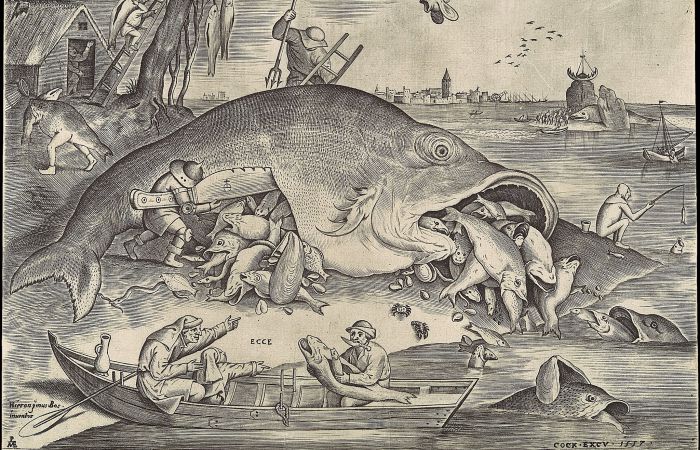Mergers tend to reduce overall innovation, making consumers “always worse off after a merger,” says Tommaso Valletti, the European Commission’s Chief Competition Economist.
As competition authorities and economists worry about the competitive implications of increasingly concentrated markets, horizontal merger reviews should be broadened to include their potential implications for future innovation. So said Tommaso Valletti, the European Commission’s Chief Competition Economist, during a keynote lecture at an antitrust conference at Northwestern University last week.
Valletti, an Economics professor at Imperial College Business School and at the University of Rome Tor Vergata, joined the European Commission a year ago. During this time, the European Commission made a number of high-profile decisions, such as leveling a record €2.42 billion antitrust fine on Google, vetoing the proposed merger between Deutsche Boerse and the London Stock Exchange, clearing the now-completed $130 billion merger between Dow Chemical and DuPont (now known as DowDuPont), and launching an investigation of the proposed merger between Bayer and Monsanto.
Most of Valletti’s talk during the Searle Center’s 10th Annual Conference on Antitrust Economics and Competition Policy was devoted to the subject of horizontal mergers and their impact on innovation, through the prism of the Dupont-Dow merger, which the EC cleared under the condition that DuPont divest of its global R&D pesticide facilities. It is the first to be cleared of the three mega-mergers that will reduce the number of top firms in the industry from five to three. The other two pending mergers are the Bayer’s planned purchase of Monsanto and ChemChina’s plan to buy Syngenta.

Valletti, who stressed that he was expressing his personal views and that those do not necessarily represent the views of the European Commission or its Directorate-General for Competition, described the stir that the EC’s decision on DowDuPont caused among some economists and antitrust experts in Europe. “Some people said it was a ‘quantum leap.’ Some said it was ‘crystal ball gazing’ by the Commission, or that the Commission is ‘predicting the winner of the 2022 World Cup,’ or that we introduced a new theory of harm based on innovation that had never been done before and that the remedy that we imposed was unprecedented and too far reaching.”
What followed was an examination of the reasons for the EC decision on DowDuPont, the merger’s implications for R&D, and the need for further research on the implications of horizontal mergers for innovation.
“The trend in the [agrochemicals] industry is one of increasing consolidation,” said Valletti. “In pesticides, there are about five big firms. If you look at the 1960s, you could count 40 firms. From forty to five is a big change. The causes and consequences of this change are very contested, but it’s a fact that this industry is increasingly concentrated and that this raises concerns in the general policy debate.”
“Among the five big firms—DuPont, Dow, Bayer, BASF, and Syngenta—only a few have the capability to do innovation at every stage and in every segment,” explained Valletti. “In this industry, you innovate by developing new active ingredients (AIs), which are used to make formulated products. To introduce an AI is a very costly process. Entry is difficult and takes a lot of time, because regulatory approval takes many years. Innovation in this industry is very important: firms compete by doing R&D and discovering new AIs. It’s a fundamental business strategy.”
The parties in the DuPont-Dow merger, he said, “had standard overlaps, both in [existing] products and in the pipeline [for future products]. They also had significant overlaps in the research for new AIs, meaning they had overlaps in fundamental R&D.”
The EC’s argument that DuPont should sell major chunks of its pesticide R&D business, added Valletti, hinged on the nature of innovation in the industry, where “firms don’t innovate randomly. Surely there’s a lot of uncertainty in the R&D outcomes, but firms have very precise research targets, and are doing specific research to achieve a certain result.”
EC economists, he explained, focused on areas like herbicides and insecticides, where R&D is focused on a number of narrower subcategories. EC economists looked at the research targets DuPont and Dow set for themselves, using internal documents and relying on the same software the firms use to track each other’s competitive abilities and strengths by assessing their rivals’ patents. “The best predictor of what [firms] will be doing 10 years into the future is the current portfolio of the patents they have now.”
To conduct a patent analysis, EC economists weighed the number of each firms’ patents with the number of citations. “We dismissed claims we should only use total R&D allocations. It was too rough, too coarse,” he explained. “When we delved into the narrower technological trajectories, there was one firm in particular, DuPont, that was not patenting a lot, but had very successful patents. So what looked at first sight as a 5–to-4 merger was more like a 4-to-3 or a 3-to-2 merger, in some areas. The overlaps in the fundamental R&D capabilities of these firms played an important part in the decision.”
What also factored into the decision were internal documents that suggested the companies will cut their scientists by large amounts. “When you see this in internal documents, it’s difficult not to be concerned,” said Valletti.
Part of the difficulty in determining the effect of mergers on innovation, argued Valletti, is that IO economists have so far not done enough work on the subject. “There’s a lot of policy work, but there’s very little explicit theoretical work about this. There’s a huge body of research on the relationship between concentration and innovation, and on the relationship between market integration and innovation, but when it comes specifically to mergers and innovation, there’s much less.”
In the course of researching this area, Valletti produced two papers (co-written with colleagues Giulio Federico and Gregor Langus) titled “A Simple Model of Mergers and Innovation,” and “Horizontal Mergers and Product Innovation: An Economic Framework.” These papers analyze the impact of a merger on firms’ incentives to innovate and show that in certain markets at least, mergers tend to reduce overall innovation, making consumers “always worse off after a merger.”
He explained that he and his co-authors found two major forces that can explain the effects of a merger on innovation. On the one hand, firms capture market shares away from rivals by innovating. By merging, a firm would not want to compete against itself, and thus would innovate less. On the other hand, the ability to coordinate product prices after a merger might give an extra incentive to innovate. The models Valletti and his co-authors chose to focus on are ones where product market competition serves as a countervailing force, and yet, “it’s never enough to counteract reductions in innovation by the merging firms.” Following mergers, they found, merging firms have less incentives to innovate.
Valletti concluded by calling on economists to conduct further research on the impact of mergers on innovation. “Both in our academic work and in our policy work, we need to look beyond standard current overlaps, or immediate overlaps arising from research pipelines,” said Valletti. “We need to look also the nature of future competition between the merging companies on the basis of their R&D activities and innovation capabilities.”
Industries where this expanded framework would naturally apply, said Valletti, are industries where innovation serves as an “important competition parameter” and where patent protection in effect guarantees appropriability, such as tech or pharmaceuticals. “An industry that to me is a natural candidate is the pharmaceutical industry, where often prices are regulated by health authorities or some public body, and so the product market’s effect as a countervailing force is diminished, compared to impact arising from diminished innovation competition.”
Disclaimer: The ProMarket blog is dedicated to discussing how competition tends to be subverted by special interests. The posts represent the opinions of their writers, not those of the University of Chicago, the Booth School of Business, or its faculty. For more information, please visit ProMarket Blog Policy.






